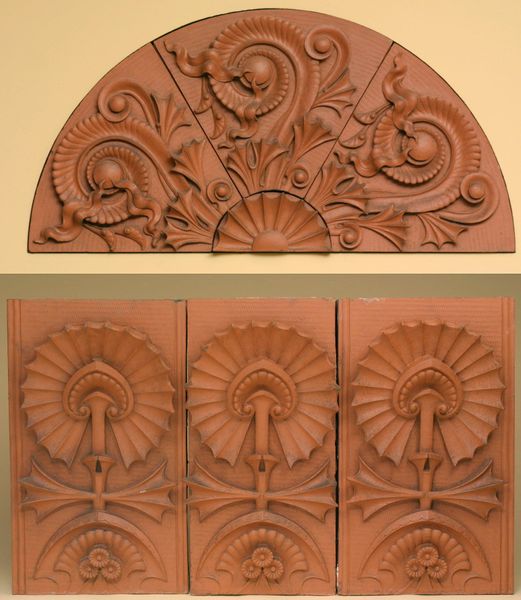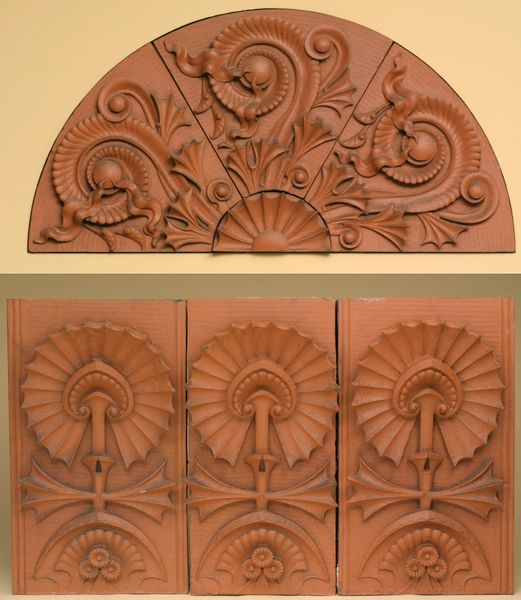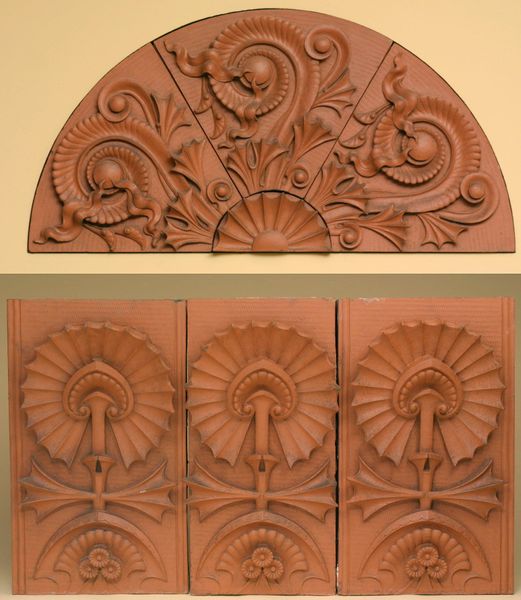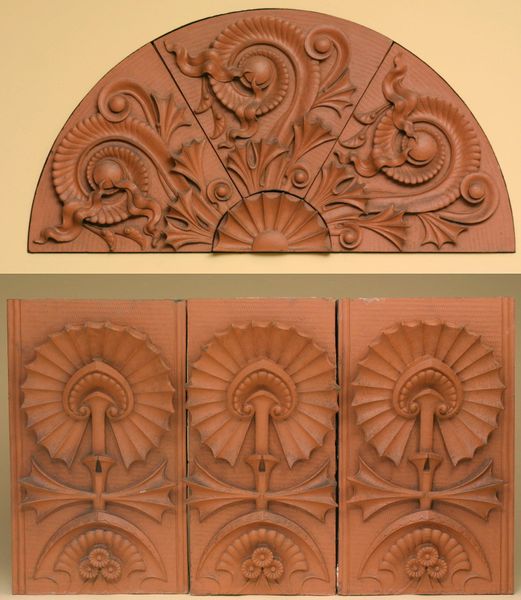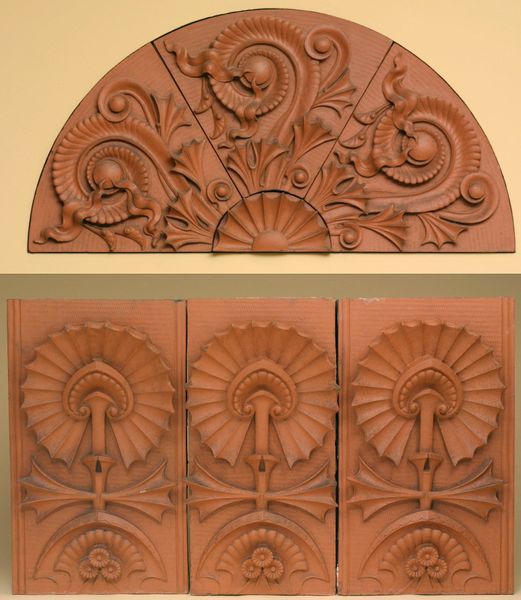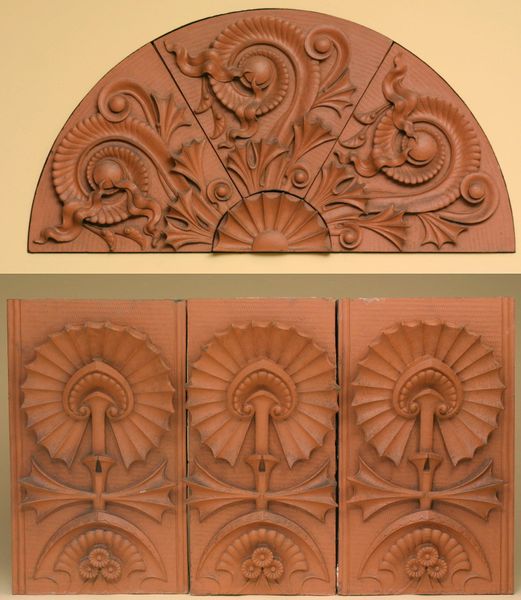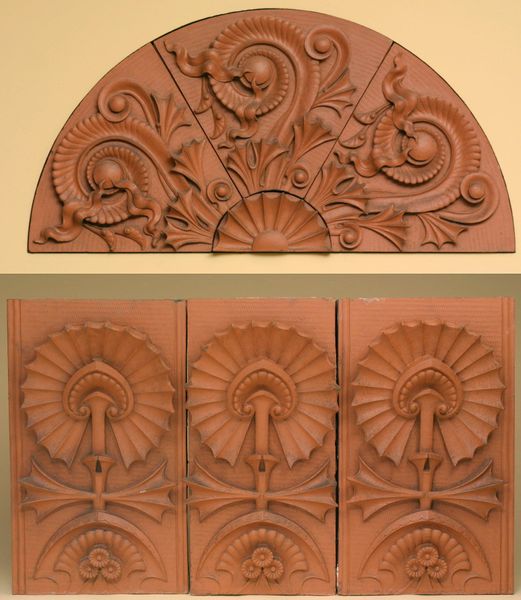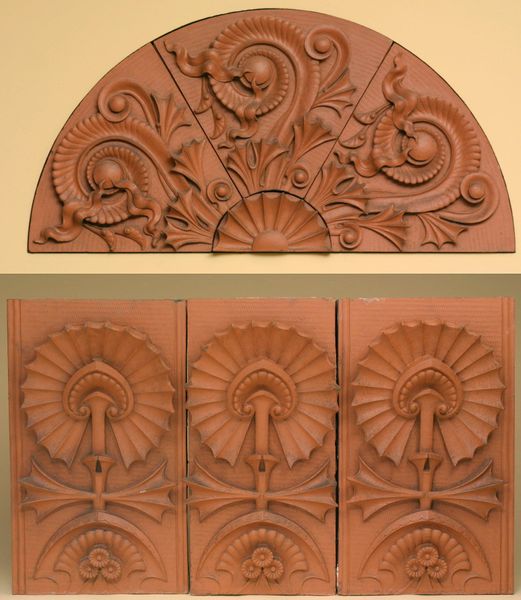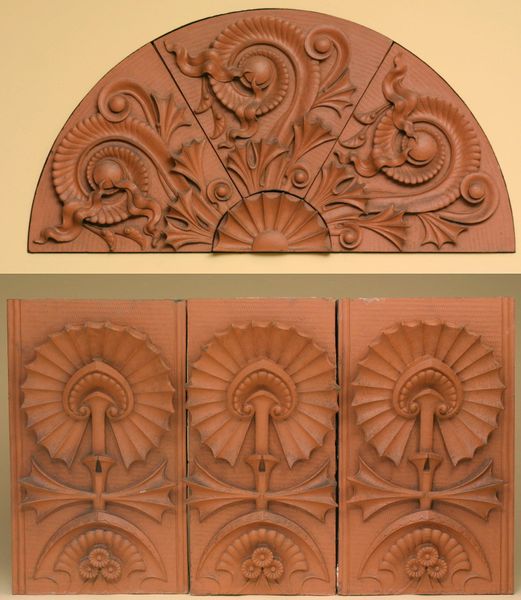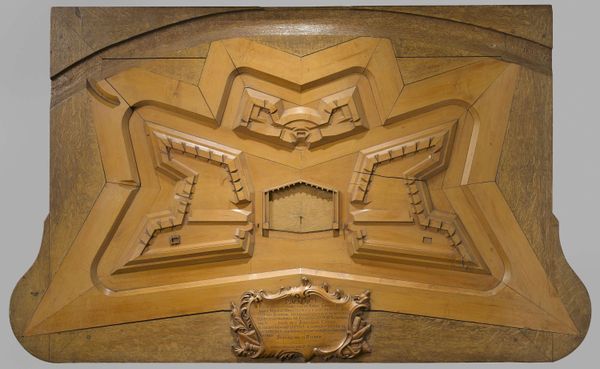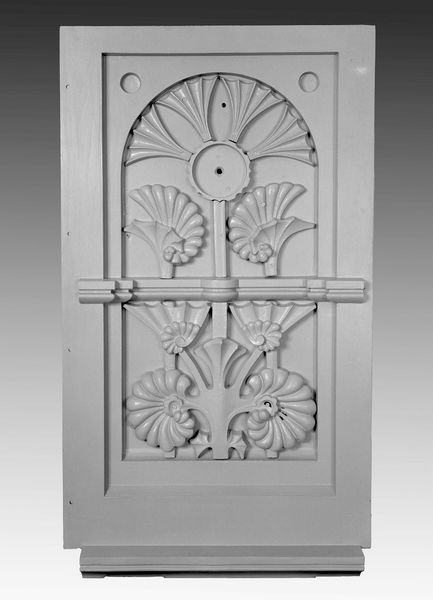
relief, terracotta, architecture
#
art-nouveau
#
relief
#
geometric pattern
#
traditional architecture
#
stoneware
#
united-states
#
terracotta
#
architecture
Copyright: Public Domain
These terracotta panels were made by Louis Sullivan, a celebrated architect known for his ornamentation. Sullivan engaged with the materiality of terracotta, an easily molded, fire-hardened clay product that allowed for replication and mass production of architectural elements, and was a signature material of the Chicago School of architecture. The panels showcase Sullivan's organic style, with stylized botanical forms in relief. The lunette's swirling tendrils and the panels' radiating floral motifs demonstrate a softened geometry. They are reminiscent of both Art Nouveau and the Arts and Crafts movements. Terracotta was an affordable alternative to carved stone, yet still offered a degree of aesthetic sophistication. It allowed Sullivan to bring intricate design to a wider audience, softening the hard edges of industrial architecture with the warmth and texture of earth. Sullivan's decision to work with terracotta reveals his interest in democratizing design through industrial means.
Comments
minneapolisinstituteofart about 2 years ago
⋮
Louis Sullivan designed these terracotta panels for the exterior of the Scoville Building in Chicago, one of the Adler and Sullivan firm's earliest commissions. It required them to remodel an existing Adler structure to accord with a new, much larger addition. The terracotta pieces shown here formed part of the organic decoration of stylized plants with which Sullivan tied the two buildings together. This lunette ornamented the arch above the windows of the top (fifth) story. It has an undulating design of ferns unfurling and would have complemented other organically-inspired terracotta pieces throughout the exterior.
Join the conversation
Join millions of artists and users on Artera today and experience the ultimate creative platform.


